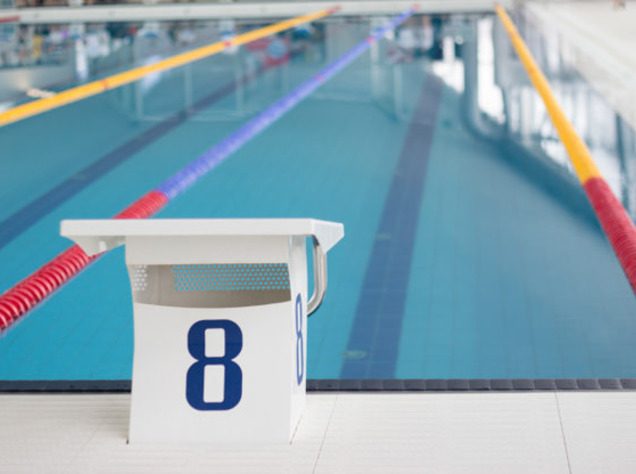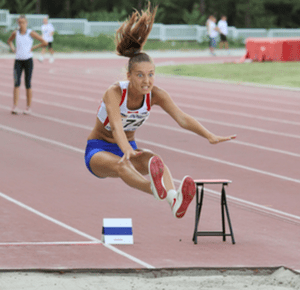An Overview Of Swimming Strokes
Just like there are delicate intricacies to dominating on the soccer field or basketball court, there’s more to swimming than just jumping in the water and hoping for the best. Furthermore, it takes some very diligent and concerted effort to fully develop yourself as a reliable, consistent, and flexible swimmer. To this, there are four main strokes in swimming that everybody should learn once they get in the pool.
Of course, you know these techniques are the freestyle, backstroke, breaststroke, and butterfly — each with their very own form and style that must be employed for maximum speed and endurance. Awareness, timing, and communication are of utmost importance for successful mastering of strokes. CoachUp has put together some pointers for each stroke so be sure to use them to your advantage! If you’re seeking out some more advanced help, try checking out the full articles on each of the strokes, good luck!

Freestyle
Any good freestyle has three phases; *preparatory + setup*, which details your entry, stretch, downsweep, and catch; *propulsive*, which focuses on your insweep and upsweep; and. finally, your *recovery* and the use of the high elbow. Freestyle kicking is most efficient when the entire leg, from hips to knee, is used.
Frequently, swimmers bend at the knee and cause turbulence and resistance, slowing them down significantly. Body position for the freestyle is very important and the swimmer must be streamlined in lateral and horizontal alignment with effective body roll. Overreaching and poor head positioning are two of the most common causes of resistance. Breathing should be performed on both sides of the body, but some swimmers do prefer to breathe on one side only. Find out what works for you, but try breathing every three or five strokes.
(Related: Read our full entry on the freestyle stroke here.)
Backstroke
Admittedly, the backstroke is a close relative to the freestyle. Again, there are three phases; the first of which is the *setup*, which deals with your entry and downsweep. Then, of course, the *propulsive* phase, which typically moves in an upsweep, downsweep, then back to upsweep. The third and final phase is recovery — make sure you’re setting yourself up well for whatever is next!
Kicking should be diagonal due to the body roll required for this stroke. It should be shallow and at about 6 beats per arm stroke. The chest should be out of the water, with your hips, stomach, and feet one inch below water. Additionally, your head should be about halfway submerged. There is some evidence that suggests swimmers should inhale while the right hand enters and exhales while the left hand enters due to the way the body’s blood circulates, but swimmers may elect various breathing methods.
(Related: Read our full-length article about the backstroke here.)
Breaststroke
The breaststroke has undergone some small changes within the past ten years. It was first developed in the 1960s and since then the stroke has evolved into a whip-kicking, undulating stroke. The arm stroke in breaststroke has three phases, per usual. You’ve got your setup once more — outsweep and downsweep — your propulsive phase — insweep — and, again, your recovery — or, the underwater stretch.
The breaststroke kick is a short, narrow whip-kick and timing is key for this stroke. When arms are in outsweep, your legs should be coming together. Horizontal and lateral body alignment is mandatory, so try not to tilt your head if you can. Additionally, the swimmer should exhale through the nose as soon as his or her face enters the water.
(Related: Read our tips for acing the breaststroke here.)
Butterfly
Lastly, the butterfly is a beautiful stroke when performed correctly. The three arm stroke, thankfully, is a little different than the others. These phases include the entry, outside shoulders, outsweep, and catch; the propulsive phase, insweep and upsweep; and the release. Your legs should be kept close together for the dolphin kick and good undulation/timing is crucial to keep this stroke in symphony.
A good butterfly stroke will utilize two dolphin kicks per arm stroke — the first kick on the outsweep and the second on the upsweep. The swimmer must breathe with the head straight in front rather than to the side to prevent poor lateral and horizontal positing.
(Related: Put it together + train for a medley! You can read about that here.)
Huddle Up
Ultimately, your abilities will born through hard work, effort, and desire, so if you start to get hung up on any of these, be patient! Just like riding a bike or hitting a ball, these strokes will take time as well. All of them offer their own dynamics and challenges, and some races, like the medley, will put them altogether for one brutally tough competition.
If that sounds like your cup of tea, but you’re still wondering how to get better in these areas, or would like to iron out a few of your inconsistencies, try booking one of CoachUp’s private trainers to keep you afloat. Our team will have you effectively acing these strokes and winning races in no time! What are you waiting for?
How useful was this post?
Click on a star to rate it!
Average rating 4 / 5. Vote count: 3
No votes so far! Be the first to rate this post.




One Response
MY NEICE LEARNED EVERYTHING FROM THIS WEBSITE ITS SO NICE!